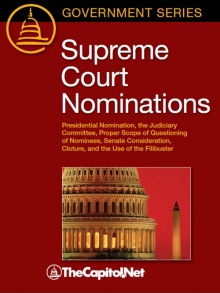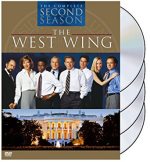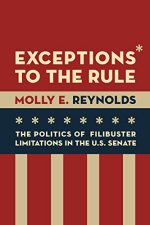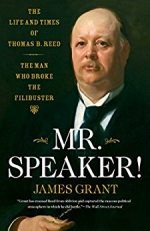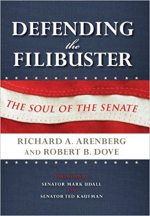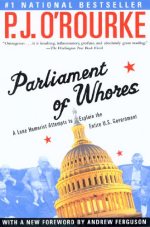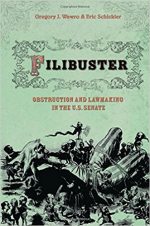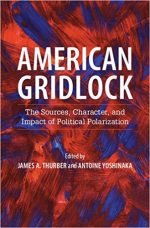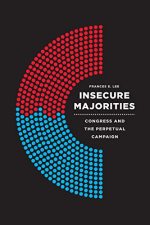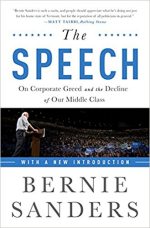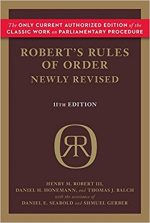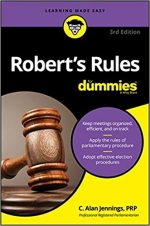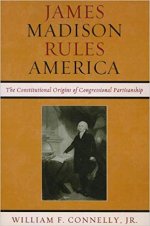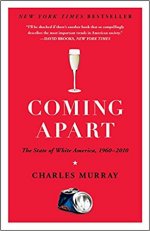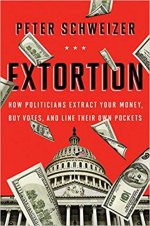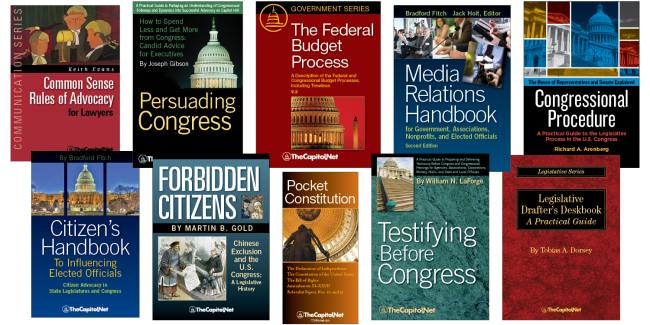Filibuster / Unlimited Debate

Creative Commons License photo credit: PatrickRohe
When a senator is recognized to speak on a pending measure, few limitations are placed on her. Debate is generally unlimited on all pending measures. A senator may yield to another senator for a question, but the senator still controls the floor. One of the most visible of Senate characteristics is the right of an individual senator to maintain the floor, that is, to speak for an extended period of time. Continuing, extended debate is referred to as a filibuster. The image of James Stewart in the film, Mr. Smith Goes to Washington, presents an exaggerated picture of one senator tying up the work of the Senate.
030613 – Sen. Rand Paul Senate Filibuster – HOUR 1
A contemporary approach to filibusters is the so-called “tag-team filibuster.” A senator speaks for a period and then yields to another senator. When several senators participate in extended debate, it takes some time for the Senate to realize a filibuster is being conducted. Therefore, even the threat of a filibuster carries weight as the Senate attempts to schedule and consider legislation.
Senate rules prohibit a senator from speaking more than twice on the same subject on the same legislative day. Because each amendment is considered a different subject, the so-called two-speech rule is not a practical limit on debate.
A filibuster can be ended by negotiation among senators or by invoking cloture. Cloture is the only procedure by which the Senate can vote to set an end to debate without also rejecting the measure under consideration.
A time-delaying tactic associated with the Senate and used by a minority in an effort to delay, modify or defeat a bill or amendment that would likely pass if voted on directly. The most common method is to take advantage of the Senate’s rules permitting unlimited debate, but other forms of parliamentary maneuvering may be used. The stricter rules of the House make filibusters more difficult, but delaying tactics are employed occasionally through various procedural devices allowed by House rules.
030613 – Sen. Rand Paul Senate Filibuster – HOUR 2
Using the filibuster to delay or block legislative action has a long history. The term filibuster — from a Dutch word meaning “pirate” — became popular in the 1850s, when it was applied to efforts to hold the Senate floor in order to prevent a vote on a bill.
In the early years of Congress, representatives as well as senators could filibuster. As the House of Representatives grew in numbers, however, revisions to the House rules limited debate. In the smaller Senate, unlimited debate continued on the grounds that any senator should have the right to speak as long as necessary on any issue.
In 1841, when the Democratic minority hoped to block a bank bill promoted by Kentucky Senator Henry Clay, he threatened to change Senate rules to allow the majority to close debate. Missouri Senator Thomas Hart Benton rebuked Clay for trying to stifle the Senate’s right to unlimited debate.
030613 – Sen. Rand Paul Senate Filibuster HOUR 10
Three quarters of a century later, in 1917, senators adopted a rule (Rule 22 (XXII)), at the urging of President Woodrow Wilson, that allowed the Senate to end a debate with a two-thirds majority vote, a device known as “cloture.” The new Senate rule was first put to the test in 1919, when the Senate invoked cloture to end a filibuster against the Treaty of Versailles. Even with the new cloture rule, filibusters remained an effective means to block legislation, since a two-thirds vote is difficult to obtain. Over the next five decades, the Senate occasionally tried to invoke cloture, but usually failed to gain the necessary two-thirds vote. Filibusters were particularly useful to Southern senators who sought to block civil rights legislation, including anti-lynching legislation, until cloture was invoked after a 57 day filibuster against the Civil Rights Act of 1964. In 1975, the Senate reduced the number of votes required for cloture from two-thirds to three-fifths, or 60 of the current one hundred senators.
Many Americans are familiar with the filibuster conducted by Jimmy Stewart, playing Senator Jefferson Smith in Frank Capra’s film Mr. Smith Goes to Washington, but there have been some famous filibusters in the real-life Senate as well. During the 1930s, Senator Huey P. Long effectively used the filibuster against bills that he thought favored the rich over the poor. The Louisiana senator frustrated his colleagues while entertaining spectators with his recitations of Shakespeare and his reading of recipes for “pot-likkers.” Long once held the Senate floor for 15 hours. The record for the longest individual speech goes to South Carolina’s J. Strom Thurmond who filibustered for 24 hours and 18 minutes against the Civil Rights Act of 1957.
House of Representatives, Time Limitations
Debate is subject to many limitations under the rules and precedents of the House. Most of the limitations imposed by House rule concern the duration of time allowed for the debate of a particular proposition. These include, for example, the hour rule (Manual § 957), the 40-minute rule (Manual §§ 891, 995), the 20-minute rule (Manual § 892), the ten-minute rule (Manual § 987), the five-minute rule (Manual § 978), and the time limits that are imposed on the one-minute speeches or special-order speeches that are often permitted when no legislative business is pending (Manual § 950). For a more detailed discussion of these time limitations, see §§ 44–50, infra.
Most of these are rules of general applicability. In addition, the House may adopt a special rule from the Committee on Rules that places a different limit on the duration of debate on a particular legislative proposal.
This practice enables the House, by majority vote, to specify time for, and control of, debate depending on the complexity of the proposed measure.
Unless otherwise provided by House rule or by a special rule from the Committee on Rules, a proposition considered in the House is debated under the hour rule. §§ 44, 45, infra. However, the various motions that may apply to a proposition often carry their own time limitations for debate and, in some instances, preclude debate entirely.
From the House Practice Manual, Chapter 16, Consideration and Debate (see FDsys, then select “Browse Collections” then select “House Practice”, then scroll down to “House Practice” and select the relevant Congress). The House Practice Manual is also available on Govinfo.gov.
Also see
- Cloture (CongressionalGlossary.com)
- Hold (CongressionalGlossary.com)
- Unanimous Consent Agreement / Time Limitation Agreement (CongressionalGlossary.com)
- Understanding Cloture in Senate Floor Proceedings
- § 6.210 Consideration and Debate on the Senate Floor, § 6.211 Longest Senate Filibusters, § 6.230 Cloture in Senate Floor Proceedings, in Congressional Deskbook
- Chapter 5.H. Filibuster; Ch. 5.I. The Nuclear Option; in Congressional Procedure
More
- Congressional Procedure, Chapter 5. H. Filibuster
- Filibuster, Cloture, Presidential Nominations, Article II Section 2 – CRS Reports
- “Understanding Cloture in Senate Floor Proceedings“
- “Understanding Filibusters in Congress“
- “A Futile Suit Against the Filibuster,” by Jonathan Adler, The Volokh Conspiracy, May 15, 2012
- “The Senate’s Problem Isn’t the Filibuster, It’s a Lack of Open Debate,” by James Wallner, Reason, January 30, 2021
- Nuclear option – Wikipedia
- “Minority Rights and Senate Procedures,” CRS Report RL30850 (15-page PDF
 )
) - “Unanimous Consent Agreements Establishing a 60-Vote Threshold for Passage of Legislation in the Senate,” CRS Report RL34491 (7-page PDF
 )
) - “Debate and Motions on the House Floor,” CRS Report 98-827 (6-page PDF
 )
) - “Invoking Cloture in the Senate,” CRS Report 98-425 (6-page PDF
 )
) - “Cloture Attempts on Nominations,” CRS Report RL32878 (23-page PDF
 )
) - “Proposals to Change the Operation of Cloture in the Senate,” CRS Report R41342 (27-page PDF
 )
) - “Proposals to Amend the Senate Cloture Rule,” CRS Report RL32149 (17-page PDF
 )
) - “Majority Cloture for Nominations: Implications and the ‘Nuclear’ Proceedings,” CRS Report R43331 (14-page PDF
 )
) - “Cloture: Its Effect on Senate Proceedings,” CRS Report 98-780 (7-page PDF
 )
) - “Filibusters and Cloture in the Senate,” CRS Report RL30360 (29-page PDF
 )
) - “Changing the Senate Cloture Rule at the Start of a New Congress,” CRS Report R44709 (30-page PDF
 )
) - “Changing Senate Rules or Procedures: The ‘Constitutional’ or ‘Nuclear’ Option,” CRS Report RL32684 (17-page PDF
 )
) - “Procedures for Considering Changes in Senate Rules,” CRS Report R42929 (21-page PDF
 )
) - “Voting and Quorum Procedures in the Senate,” CRS Report 96-452 (17-page PDF
 )
) - “Defending the Filibuster: The Soul of the Senate,” by Richard A. Arenberg and Robert B. Dove (Amazon)
- “The Filibuster Helps Nobody, and That Means You,” by Mike Solon and Bill Greene, WSJ, June 20, 2021
- “It’s Not The Filibuster’s Fault We Have ‘Gridlock,’ It’s The Senators’,” by Michael Connolly, Federalist, December 3, 2021
Senate Rule 22: Executive Nominations and the Role of Debate
Courses
- Congressional Operations Briefing – Capitol Hill Workshop
- Drafting Federal Legislation and Amendments
- Writing for Government and Business: Critical Thinking and Writing
- Custom Training
- Congressional Operations Poster, with Federal Budget Process Flowchart
- Federal Budgeting, a Five-Course series on CD
- Congress, the Legislative Process, and the Fundamentals of Lawmaking Series, a Nine-Course series on CD
Publications
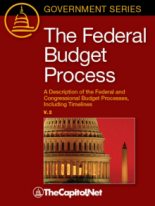
The Federal Budget Process 2E |
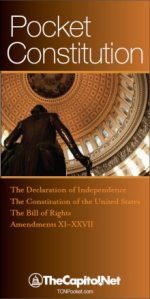
Pocket Constitution |
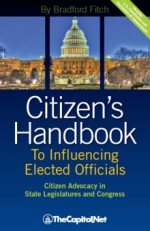
Citizen’s Handbook to Influencing Elected Officials: A Guide for Citizen Lobbyists and Grassroots Advocates |
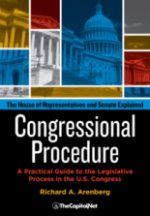
Congressional Procedure |
CongressionalGlossary.com, from TheCapitol.Net
|
The West Wing: Season 2 |
Exceptions to the Rule: The Politics of Filibuster Limitations in the U.S. Senate |
Mr. Speaker!: The Life and Times of Thomas B. Reed The Man Who Broke the Filibuster |
Defending the Filibuster: The Soul of the Senate |
|
Parliament of Whores: A Lone Humorist Attempts to Explain the Entire U.S. Government |
Don’t Vote It Just Encourages the Bastards |
Filibuster: Obstruction and Lawmaking in the U.S. Senate |
American Gridlock: The Sources, Character, and Impact of Political Polarization |
|
Insecure Majorities: Congress and the Perpetual Campaign |
The Speech: On Corporate Greed and the Decline of Our Middle Class |
Robert’s Rules of Order Newly Revised |
Robert’s Rules For Dummies |
|
Mr. Smith Goes To Washington |
James Madison Rules America: The Constitutional Origins of Congressional Partisanship |
Coming Apart: The State of White America, 1960-2010 |
Extortion: How Politicians Extract Your Money, Buy Votes, and Line Their Own Pockets |
For more than 40 years, TheCapitol.Net and its predecessor, Congressional Quarterly Executive Conferences, have been teaching professionals from government, military, business, and NGOs about the dynamics and operations of the legislative and executive branches and how to work with them.
Our custom on-site and online training, publications, and audio courses include congressional operations, legislative and budget process, communication and advocacy, media and public relations, testifying before Congress, research skills, legislative drafting, critical thinking and writing, and more.
TheCapitol.Net is on the GSA Schedule, MAS, for custom on-site and online training. GSA Contract GS02F0192X
TheCapitol.Net is now owned by the Sunwater Institute.
Teaching how Washington and Congress work ™

